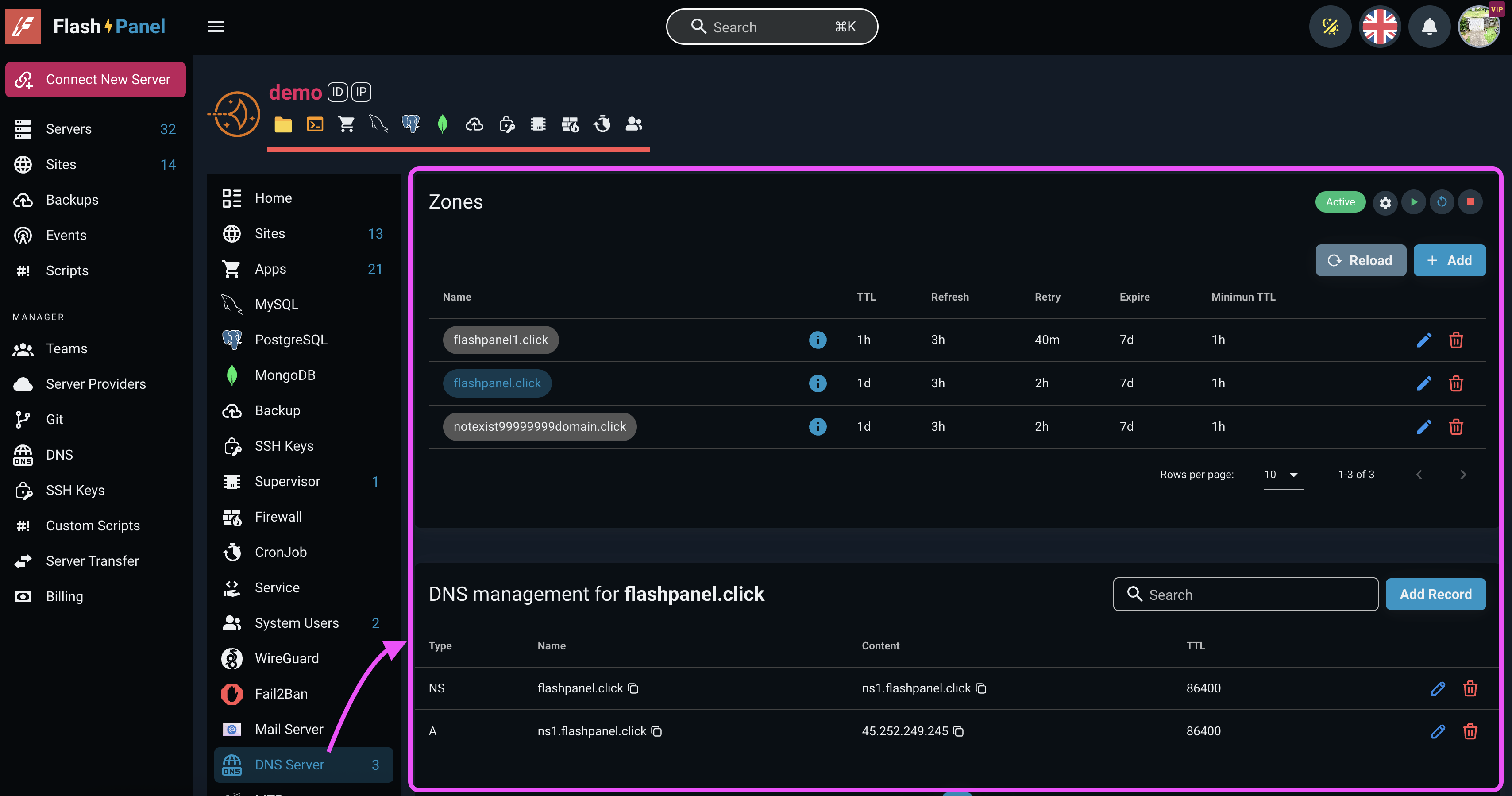DNS Server

FlashPanel now allows you to turn your VPS/server into a DNS server. This gives you full control over your domain zones and DNS records directly from your panel.
🧩 What is a DNS Server?
A DNS (Domain Name System) server maps domain names (like example.com) to IP addresses. Hosting your own DNS gives you control over how your domains are resolved.
🚀 Installing the DNS Server
- Go to your Server Management Page.
- On the left sidebar, click on DNS Server.
- If not installed yet, click the
Installbutton. - The installation process takes around 1–2 minutes.
⚙️ Managing DNS Zones
- Once installed, you can add zones to manage.
- Each zone represents a domain or subdomain.
- You can view
Name Serverconfiguration by clicking theInfobutton.
📄 Managing DNS Records
- Click on a zone to view and manage DNS records.
- Supported record types: A, AAAA, CNAME, MX, TXT, NS, and more.
- You can:
- Add new records
- Edit records
- Delete records
📥📤 Import & Export Zone Records
FlashPanel now supports importing and exporting DNS zone records, making it easier to migrate or backup your DNS configurations.
Import Zone Records
- Import from file: Upload a zone file in standard DNS format to quickly populate your zone with records.
- Supported formats: Standard DNS zone file format (RFC 1035).
- How to import:
- Navigate to your DNS zone management page
- Click the Import Records button
- Select your zone file and upload
- Review the imported records before confirming
Export Zone Records
- Export to file: Download your current zone configuration as a standard DNS zone file.
- Use cases: Backup, migration to other DNS providers, or sharing configurations.
- How to export:
- Go to your DNS zone management page
- Click the Export Records button
- Choose your preferred format
- Download the generated zone file
Benefits
- Quick Migration: Easily move DNS configurations between servers or providers
- Backup & Restore: Create backups of your DNS settings for disaster recovery
- Bulk Management: Import multiple records at once instead of adding them individually
- Standardization: Use industry-standard zone file formats for compatibility
📌 Notes
- For your domain to work with this DNS server, update the NS records on your domain registrar.
- If you're using Cloudflare or another DNS provider, disable it to allow proper resolution from your DNS server.
Enjoy self-hosted DNS management!